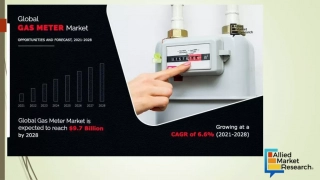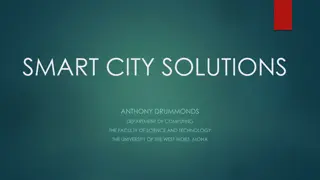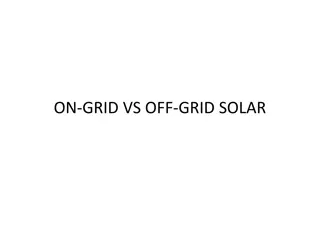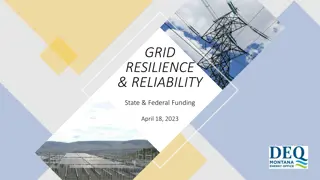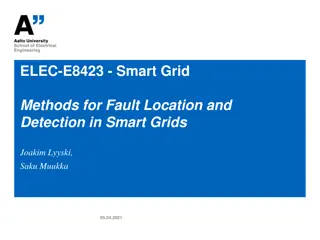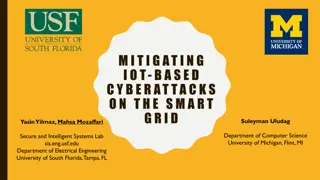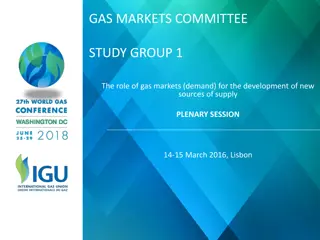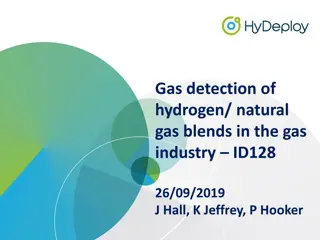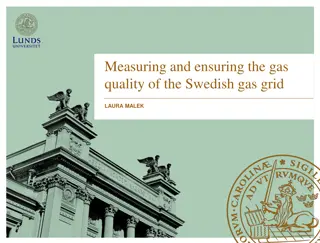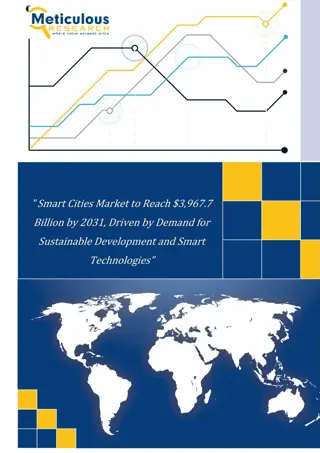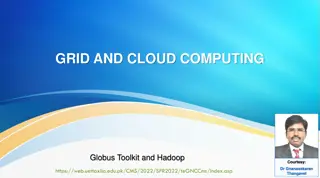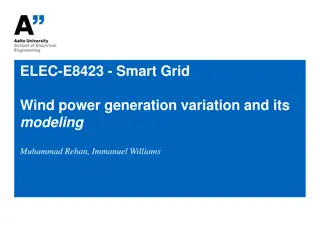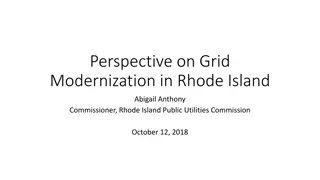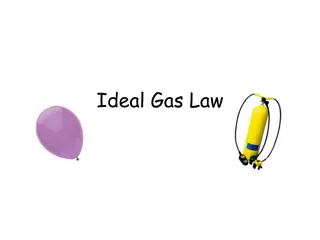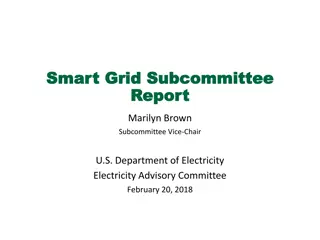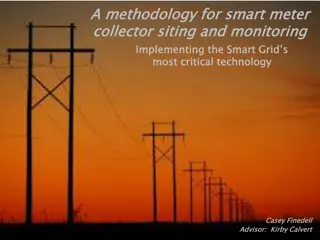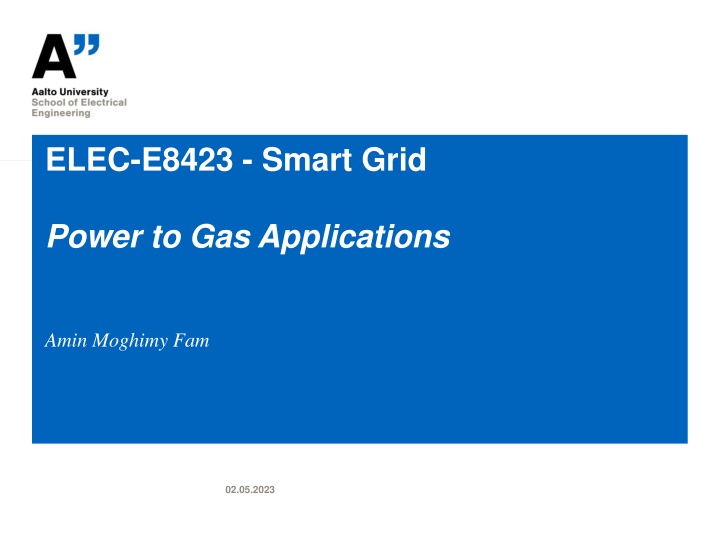
Smart Grid Power to Gas Applications Overview
Power to gas (P2G) technology utilizes electrical energy to produce gaseous fuels like hydrogen and methane, offering a sustainable alternative to fossil fuels. This process plays a crucial role in reducing carbon emissions and achieving climate goals outlined in the Paris Agreement. The advancements in P2G applications highlight its potential in decarbonizing various sectors such as industry, energy production, and transportation. Explore the latest developments and potential benefits of P2G technology in this insightful overview.
Download Presentation

Please find below an Image/Link to download the presentation.
The content on the website is provided AS IS for your information and personal use only. It may not be sold, licensed, or shared on other websites without obtaining consent from the author. If you encounter any issues during the download, it is possible that the publisher has removed the file from their server.
You are allowed to download the files provided on this website for personal or commercial use, subject to the condition that they are used lawfully. All files are the property of their respective owners.
The content on the website is provided AS IS for your information and personal use only. It may not be sold, licensed, or shared on other websites without obtaining consent from the author.
E N D
Presentation Transcript
ELEC-E8423 - Smart Grid Power to Gas Applications Amin Moghimy Fam 02.05.2023
Introduction Power to gas (P2G) is an electro-chemical process in which electrical energy is used to produce gaseous such as hydrogen (??) and Methane (???) directly. ??can be used to produce other productions such as synthetic natural gas (SNG), ???, methanol, and LPG. Nowadays, ??is used in industry for petroleum refining, glass purification, fertilizer production, semiconductor manufacturing, and ... . Currently, most of the needed ??is produced from fossil fuels, specifically natural gas (NG). The alternative way to supply the need for ??is using electricity and electrolysers. On the other hand, the 28 Member States of the EU have signed and ratified the Paris agreement to keep global warming well below 1.5 ? above preindustrial levels. To achieve this goal, they must drop emission by 45% by 2030 and to net zero by 2050. 02.05.2023 Page 2
Introduction This requires not only to produce electricity from carbon neutral resources, but also to reduce carbon emission in industry feedstock, industry energy, heating sector, and transportation sector. Thanks to recent development in producing electricity from renewable resources, electrifying and using green ?? (produced from renewable generated electricity) by means of sector coupling is an essential lever to decarbonize human activities. Hence, P2G is not only a technology to provide an alternative source for current demand of ??, but also a promising tool to have a sustainable life on planet earth. In conclusion, there is a need for ?? produced by P2G process in the future and there will be more applications for ?? in the future than now. 02.05.2023 Page 3
P2G Process 02.05.2023 Page 4
Electrolyser SOE PEM ALKALINE SCHEMATIC ELECTROLYTE TEMP. (OC) EFF. (%) H2 PURITY (%) TECH. STATUS LIFETIME (H) ADVANTAGES Ceramic (Solid) 500-1000 81-86 99.9 Demonstration <40,000 Low capital cost High efficiency No high value catalysts Polymer (Solid) 50-90 67-82 99.999 Commercial <20,000 Purity of H2 Quick response Simple and compact design high value catalysts Lower durability KOH (Liquid) 60-90 62-82 >99.8 Mature <90,000 Mature tech. High stability No high value catalysts Dynamic slowness Gas permeation DISADVANTAGES Safety issues Instability of electrodes 02.05.2023 Page 5
Power System Generation & Transmission Enabling more renewable energy Less curtailment Ancillary services Combined Heat and Power Adding flexibility Power balance New scheme for planning 02.05.2023 Page 6
Heat and Gas Sector New scheme for Combined Heat and Power Producing SNG for Gas network Decarbonizing Heat and Gas sector Industrial Heat 02.05.2023 Page 7
Industry Feedstock Liquified H2 Refining Methanol Ammonia Processing 02.05.2023 Page 8
Transportation Green Electricity Hydrogen Medium/Small cars Busses Heavy trucks Trams and railways Synfuel Airplanes Ships 02.05.2023 Page 9
Smart Grid A Smart Grid is an electrical grid which includes advanced metering infrastructure and smart and remote-controlled components. Data Remote-control Control and coordinate systems fast, secure, and precise. Enables sector coupling Is essential for normal operation of the system 02.05.2023 Page 10
Conclusion Smart Grid infrastructure enables integrating new technologies into energy sector and having a sustainable life. P2G is not only an alternative way to supply current for H2, but also a promising tool to decarbonize human activities. In the future, P2G will play a great role in most sectors, including electricity, heat, gas, transportation, and . 02.05.2023 Page 11
References [1] Undertaking, Hydrogen Joint. "Hydrogen roadmap Europe: A sustainable pathway for the European Energy Transition." (2019). [2] EC, EC. "Communication from the Commission to the European Parliament, the Council, the European Economic and Social Committee and the Committee of the Regions." A hydrogen strategy for a climate-neutral Europe (2020). [3] Koirala, Binod, et al. "Integrated electricity, hydrogen and methane system modelling framework: Application to the Dutch Infrastructure Outlook 2050." Applied Energy 289 (2021): 116713. [4] Ozturk, Merve, and Ibrahim Dincer. "A comprehensive review on power-to-gas with hydrogen options for cleaner applications." International Journal of Hydrogen Energy 46.62 (2021): 31511-31522. [5] Mazza, Andrea, Ettore Bompard, and Gianfranco Chicco. "Applications of power to gas technologies in emerging electrical systems." Renewable and Sustainable Energy Reviews 92 (2018): 794-806. [6] Yue, Meiling, et al. "Hydrogen energy systems: A critical review of technologies, applications, trends and challenges." Renewable and Sustainable Energy Reviews 146 (2021): 111180. [7] Li, Bo, et al. "Modeling integrated power and transportation systems: Impacts of power-to-gas on the deep decarbonization." IEEE Transactions on Industry Applications 58.2 (2021): 2677-2693. [8] Wulf, Christina, Jochen Lin en, and Petra Zapp. "Review of power-to-gas projects in Europe." Energy Procedia 155 (2018): 367-378. [9] Yapicioglu, Arda, and Ibrahim Dincer. "A review on clean ammonia as a potential fuel for power generators." Renewable and Sustainable Energy Reviews 103 (2019): 96-108. [10] Jiang, Yuewen, and Liyun Guo. "Research on wind power accommodation for an electricity-heat-gas integrated microgrid system with power-to-gas." IEEE Access 7 (2019): 87118-87126. 02.05.2023 Page 12
Thanks for your attention! Any Questions? Amin Moghimy Fam Amin.moghimyfam@aalto.fi 02.05.2023 Page 13

